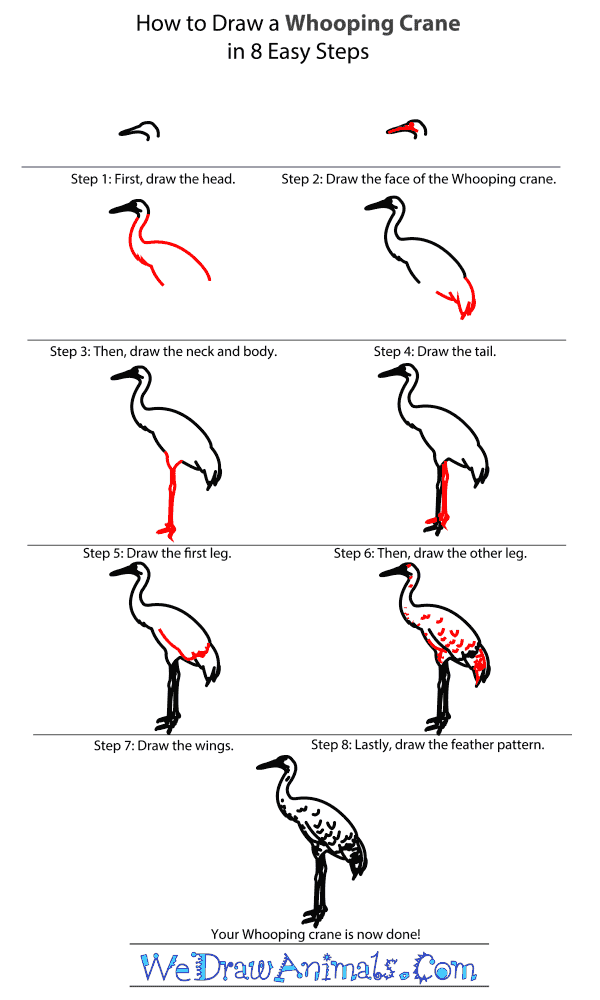In this quick tutorial you'll learn how to draw a Whooping Crane in 8 easy steps - great for kids and novice artists.
The images above represent how your finished drawing is going to look and the steps involved.
Below are the individual steps - you can click on each one for a High Resolution printable PDF version.
At the bottom you can read some interesting facts about the Whooping Crane.
Make sure you also check out any of the hundreds of drawing tutorials grouped by category.
How to Draw a Whooping Crane - Step-by-Step Tutorial
Step 1: Let's start with the head. Draw a tiny round shape with a very thin beak.
Step 2: To detail the whooping crane's face, simply fill in the beak.
Step 3: Now we can draw the body. Draw a long, curved neck and widen it for the body, leaving a gap for the tail and legs.
Step 4: To draw the tail, start from the right side of the body and draw a line downwards in a choppy manner for the feathers, leaving a small gap for the feet.
Step 5: Alright, draw the legs by making two long lines, and then three more at the bottom for the claws.
Step 6: Draw the second leg behind the first.
Step 7: Draw a line that curves to the right for the wing.
Step 8: Finally, draw small triangles for the feather pattern.
Interesting Facts about the WHOOPING CRANE
The Whooping Crane is a member of the bird family and the scientific term for them is Grus americana. This animal gets its name from the whooping sound that it uses to warn the other birds of potential predators. It also calls out when it attempts to locate a mate, and to determine where its associates are located. The Egret, Heron, and Stork relatives are all smaller than this species.
Did you know?
- The animal was first documented in 1758.
- They can reach up to over 5 feet tall.
- The bird has a wingspan of almost 8 feet wide.
- They almost weigh up to 16 pounds.
- This species is 1 of 2 types of the Crane in North America.
- The creature lives up to 24 years of age.
- The animal consists of only 437 individuals in the wild.
- The species consists of 165 individuals in captivity.
This species has predators that range from the Bear, Wolverine, Fox, Wolf, Lynx, Raven, Eagle, Bobcat, and Alligator. Similarly, the Crane is a predator of crustaceans, mollusks, fish, berries, reptiles, plants, frogs, birds, rodents, fish, insects, crayfish, clams, snails, roots and grain. Since there are so few of these creatures, they are endangered to become extinct.









